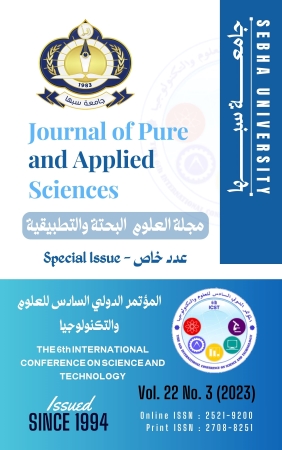Simulation of Time Independent Schrödinger Equation for Finite Potential Well Using the Graphical Solution Method
Abstract
This paper investigates applying the approximate method; Graphical Solution Method (GSM), to theoretically solve the Time Independent Schrödinger Equation (TISE) in one dimension for a finite square well using MATLAB. With just few lines of MATLAB coding, calculating and plotting accurate eigenvalues (energy), eigenvectors (wave functions) and the bound eigenstates are possible for the finite square well of a negative potential (depth of the well) of -400 eV and a well width of 0.1 nm for an electron confined to this quantum well. These eigenvalues, eigenvectors and eigenstates are obtained and discussed. The found energy eigenvalues and states are discrete and yield physical acceptable solutions. The even and odd solutions of the TISE are also considered. The graphical solutions for the finite potential well are shown. The locations of discrete eigenvalues for even and odd solutions are also presented. These eigenvalues are tested confirming the correct eigenfunctions. The precision of these solutions depend on well width L and on the interval dx used to integrate the equation. Exact analytical solutions for this case are obtained and compared with results from the GSM. The accuracy and the convergence of the numerical results are easily checked. The results showed that the GSM can be considered as a suitable mean for determining the one dimensional solutions for the finite square well.
Full text article
Authors
Copyright (c) 2023 Journal of Pure & Applied Sciences

This work is licensed under a Creative Commons Attribution 4.0 International License.
In a brief statement, the rights relate to the publication and distribution of research published in the journal of the University of Sebha where authors who have published their articles in the journal of the university of Sebha should how they can use or distribute their articles. They reserve all their rights to the published works, such as (but not limited to) the following rights:
- Copyright and other property rights related to the article, such as patent rights.
- Research published in the journal of the University of Sebha and used in its future works, including lectures and books, the right to reproduce articles for their own purposes, and the right to self-archive their articles.
- The right to enter a separate article, or for a non-exclusive distribution of their article with an acknowledgment of its initial publication in the journal of Sebha University.
Privacy Statement The names and e-mail addresses entered on the Sabha University Journal site will be used for the aforementioned purposes only and for which they were used.





